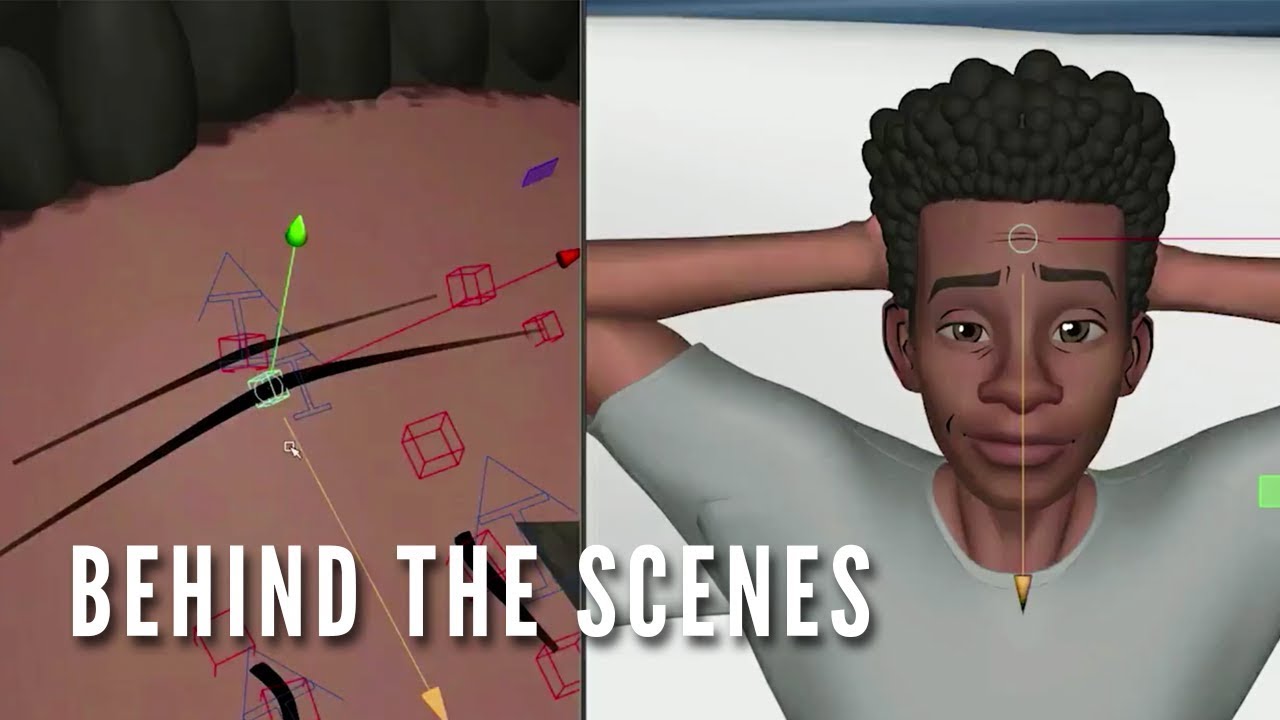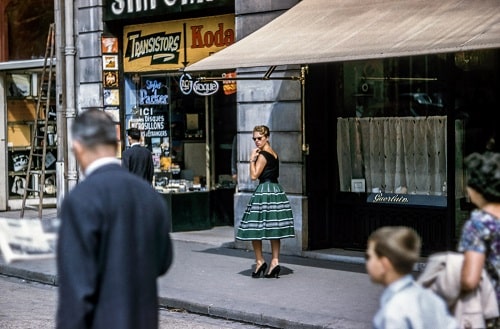The release of “Spider-Man: Into the Spider-Verse” in 2018 marked a significant shift in the world of superhero movies. The film’s unique animation style and storytelling approach received critical acclaim and even won an Academy Award for Best Animated Feature. However, the impact of the film goes beyond just its critical success. It has also influenced the animation style and storytelling approach of other superhero movies.
One of the most notable ways “Into the Spider-Verse” has influenced animation in superhero movies is through its use of multiple animation styles. The film seamlessly blends together various animation techniques, including traditional hand-drawn animation, computer-generated animation, and stop-motion animation. This approach has inspired other movies to experiment with different animation styles, such as “The Lego Batman Movie” and “Teen Titans Go! To the Movies.”
Another way “Into the Spider-Verse” has influenced animation in superhero movies is through its emphasis on character development and diversity. The film features a diverse cast of characters, each with their own unique personality and backstory. This approach has challenged the traditional superhero movie formula of having a single, white male hero as the protagonist. Other movies, such as “Black Panther” and “Captain Marvel,” have followed suit by featuring diverse casts and exploring the backgrounds of their characters.
Inception of Into the Spiderverse
In 2018, Sony Pictures Animation released a groundbreaking animated superhero film, Spider-Man: Into the Spiderverse. The film was directed by Bob Persichetti, Peter Ramsey, and Rodney Rothman, and produced by Phil Lord and Christopher Miller. It marked a new era in superhero movies and animation, as it introduced a fresh and innovative take on the beloved comic book character Spider-Man.
The idea for Spider-Man: Into the Spiderverse was born from the desire to create a unique and fresh take on the Spider-Man character. Phil Lord, who co-wrote and produced the film, wanted to explore the vast possibilities of the Spider-Man universe, which includes multiple versions of the character from different dimensions and timelines.
The film’s animation style was also a major factor in its inception. The filmmakers wanted to create a visually stunning and distinctive look that would set it apart from other superhero movies and animations. They drew inspiration from various sources, including comic book art, graffiti, and Japanese animation.
To achieve the film’s unique animation style, the filmmakers used a combination of computer-generated imagery (CGI) and traditional hand-drawn animation techniques. They also experimented with different frame rates and camera angles to create a dynamic and immersive visual experience.
Overall, the inception of Spider-Man: Into the Spiderverse was driven by a desire to push the boundaries of superhero movies and animation. The filmmakers wanted to create a film that was both visually stunning and emotionally resonant, and they succeeded in doing so. The film’s impact on animation and superhero movies has been significant, as it has inspired many other filmmakers to take risks and experiment with new storytelling techniques.
Impact on Animation Techniques
Introduction of New Animation Styles
“Spider-Man: Into the Spider-Verse” introduced new animation techniques that changed the way superhero movies are animated. The movie used a combination of traditional animation and computer-generated imagery to create a unique look that was both comic-book-like and cinematic. The animators used a technique called “motion lines” to make the characters look like they were moving quickly, and they also experimented with different frame rates to create a more dynamic look.
One of the most significant changes that “Spider-Man: Into the Spider-Verse” brought to animation was the use of a technique called “halftone dots.” This technique added a comic-book-like texture to the movie, making it look like the characters were jumping out of a comic book. The halftone dots were used to create a sense of depth and dimensionality, making the movie look more like a comic book than a traditional animated film.
Influence on Character Design
“Spider-Man: Into the Spider-Verse” also had a significant impact on character design in superhero movies. The movie featured a diverse cast of characters, each with their unique style and personality. The animators used different animation styles to differentiate between the different characters, making each one stand out.
The movie’s main character, Miles Morales, was designed to look like a comic book character come to life. The animators used a technique called “line work” to create a hand-drawn look, giving Miles a unique style that set him apart from other animated characters. The movie also featured a variety of villains, each with their unique design and animation style.
Overall, “Spider-Man: Into the Spider-Verse” has had a significant impact on animation techniques in superhero movies. The movie’s unique style and innovative animation techniques have inspired other animators to experiment with new styles and techniques, pushing the boundaries of what is possible in animation.
Influence on Storytelling
The success of “Spider-Man: Into the Spider-Verse” has not only revolutionized animation but has also influenced storytelling in superhero movies. The film introduced a fresh concept that has since been adopted by other movies in the genre. Here are some of the ways the movie has influenced storytelling in superhero movies:
Non-Linear Narratives
“Spider-Man: Into the Spider-Verse” utilized a non-linear narrative structure that allowed the audience to experience the story from different perspectives. This approach added depth to the characters and provided a unique way of storytelling. The movie’s success has since inspired other superhero movies to adopt similar non-linear structures.
For example, “Joker” (2019) utilized a non-linear narrative structure to tell the story of the infamous villain. The movie jumps back and forth between different timelines, providing a deeper understanding of the character’s motivations and actions. Similarly, “Birds of Prey” (2020) used a non-linear narrative to tell the story of Harley Quinn and her journey towards independence.
Multiverse Concept
“Spider-Man: Into the Spider-Verse” introduced the concept of a multiverse, where different versions of the same character exist in different dimensions. This concept opened up new storytelling possibilities, allowing for the exploration of different versions of characters and their interactions with each other.
The multiverse concept has since been adopted by other superhero movies. For example, “Doctor Strange in the Multiverse of Madness” (2022) explores the idea of multiple dimensions and alternate versions of characters. The upcoming “Spider-Man: No Way Home” (2021) is also rumored to feature characters from different dimensions, further cementing the influence of “Spider-Man: Into the Spider-Verse” on superhero movie storytelling.
In conclusion, “Spider-Man: Into the Spider-Verse” has had a significant influence on storytelling in superhero movies. Its use of non-linear narratives and the introduction of the multiverse concept has inspired other movies in the genre to explore new ways of storytelling.
Influence on Sound and Music
The sound and music of “Spider-Man: Into the Spider-Verse” played a significant role in making the movie a success. The movie’s soundtrack featured a mix of hip-hop, pop, and electronic music, which added to the film’s energy and helped to create an immersive experience for viewers.
One of the most notable aspects of the movie’s sound design was the use of sound effects to enhance the animation. For example, the sound of a comic book page turning was used to transition between scenes, and the sound of a punch was exaggerated to make the action more impactful. These sound effects helped to create a sense of comic book authenticity and added to the film’s overall aesthetic.
The movie’s music was also an important part of its success. The soundtrack featured songs from well-known artists like Post Malone, Nicki Minaj, and Lil Wayne, as well as up-and-coming artists like Jaden Smith. The use of popular music helped to make the movie feel more contemporary and helped to appeal to a wider audience.
Overall, the sound and music of “Spider-Man: Into the Spider-Verse” helped to create a unique and immersive experience for viewers. The movie’s use of sound effects and popular music helped to enhance the animation and make the film feel more authentic. As a result, it’s likely that we’ll see more superhero movies in the future that use similar sound and music design to create a more engaging and immersive experience for viewers.
Into the Spiderverse and Diversity
“Spider-Man: Into the Spider-Verse” is widely regarded as one of the most inclusive superhero movies ever made. The movie features a diverse cast of characters, including Miles Morales, an Afro-Latino teenager who becomes Spider-Man, and Gwen Stacy, a female Spider-Woman from an alternate universe. The movie also features an Asian version of Spider-Man, Peni Parker, and a talking pig version of the character, Peter Porker.
The movie’s commitment to diversity has been praised by critics and audiences alike. It is seen as a significant step forward for representation in superhero movies, which have historically been dominated by white male characters.
“Into the Spider-Verse” has also been praised for its portrayal of Miles Morales, who is seen as a relatable and authentic character. Miles is a complex and well-rounded character who struggles with the responsibilities of being a superhero and the pressures of everyday life. His struggles are relatable to audiences of all ages and backgrounds, making him a powerful symbol of representation and inclusion.
The movie’s commitment to diversity extends beyond its characters. The animation style used in the movie is also seen as groundbreaking and innovative. The movie combines traditional 2D animation with computer-generated imagery to create a unique and visually stunning look. The animation style is seen as a reflection of the movie’s commitment to diversity and inclusivity, as it allows for a wide range of styles and techniques to be used.
Overall, “Spider-Man: Into the Spider-Verse” has had a significant impact on the superhero movie genre. Its commitment to diversity and inclusivity has set a new standard for representation in the genre, and its innovative animation style has pushed the boundaries of what is possible in animated movies.
Legacy and Future of Animation in Superhero Movies
Since its release in 2018, Spider-Man: Into the Spider-Verse has been praised for its groundbreaking animation style and its influence on the future of superhero movies. The film’s success has paved the way for more experimentation and creativity in animated superhero films.
One of the most significant legacies of Into the Spider-Verse has been its impact on the animation industry. The film’s unique blend of traditional and digital animation techniques has inspired animators to think outside the box and push the boundaries of what is possible in animation. As a result, we can expect to see more visually stunning and innovative animated superhero movies in the future.
Another legacy of Into the Spider-Verse has been its influence on the representation of superheroes. The film introduced audiences to a diverse group of Spider-People from different dimensions and backgrounds. This representation has set a new standard for superhero movies, encouraging filmmakers to create more inclusive and diverse characters.
Looking to the future, we can expect to see more superhero movies that incorporate elements of animation. The success of Into the Spider-Verse has shown that audiences are receptive to new and innovative approaches to superhero storytelling. As a result, we may see more live-action movies that incorporate animated sequences or more animated movies that blend traditional and digital animation techniques.
In conclusion, Spider-Man: Into the Spider-Verse has had a significant impact on the animation and superhero movie industries. Its groundbreaking animation style and diverse representation have set a new standard for future superhero movies, and we can expect to see more innovative and creative approaches to superhero storytelling in the future.
Conclusion
Into the Spider-Verse has had a significant impact on the animation industry and superhero movies. The film’s innovative animation style, storytelling, and diverse representation have influenced several other movies and TV shows.
The success of Into the Spider-Verse has shown that audiences are receptive to new and creative approaches to superhero movies. Studios are now more willing to take risks with their animation styles and storytelling techniques.
The film has also inspired a new generation of animators and filmmakers to create their own unique stories and styles. It has opened up opportunities for underrepresented groups to tell their stories and showcase their talents.
Overall, Into the Spider-Verse has left a lasting impression on the animation industry and superhero genre. It has set a new standard for creativity and representation, and its influence will continue to shape the future of animation and movies for years to come.



 RELATED POSTS
RELATED POSTS





0 Comments